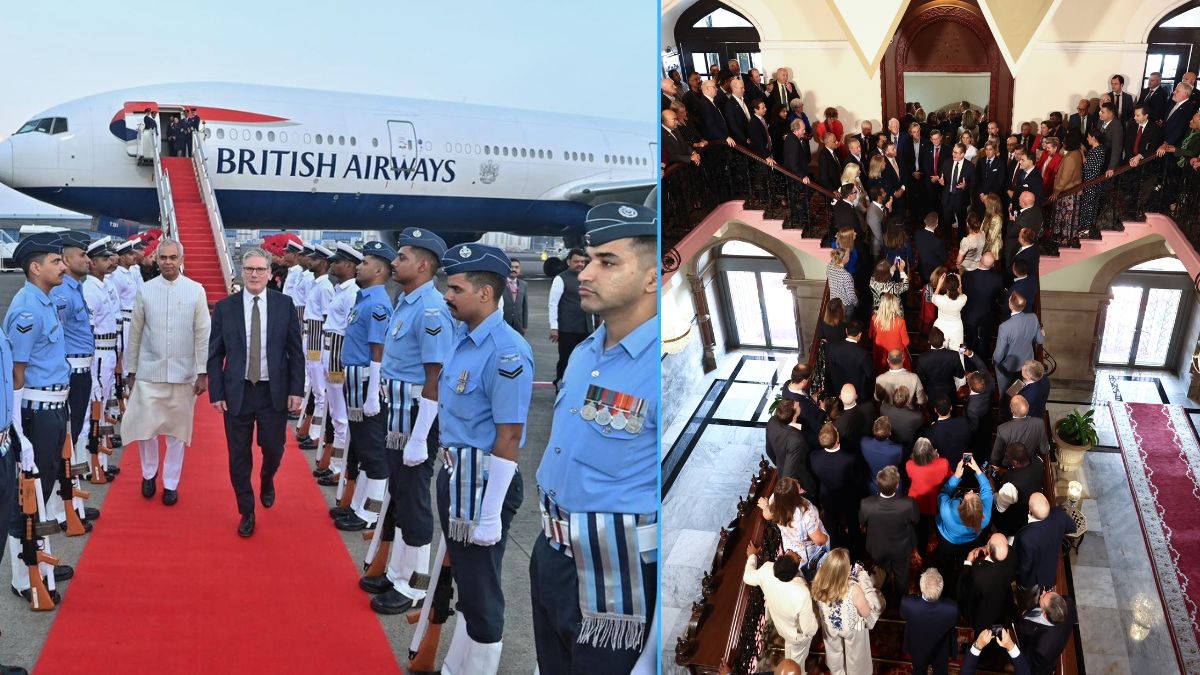British Prime Minister Keir Starmer’s two-day visit to India marks a watershed moment in bilateral ties, coming on the heels of the signing of the India–UK Free Trade Agreement (FTA), which Starmer hailed as “the best secured trade deal in British history.” The visit, his first to India as Prime Minister, is being viewed as the beginning of a new strategic and economic era between the two democracies.
Describing it as a “turning point in our shared future,” UK PM Starmer expressed his desire for the deal to be implemented “as soon as humanly possible”. He even described the India-UK Free Trade Agreement as the biggest deal the United Kingdom has signed since leaving the European Union.
Signed in July 2025, the FTA, formally known as the Comprehensive Economic and Trade Agreement (CETA), slashes tariffs on a massive scale. India will reduce duties on 90% of UK product lines, bringing average tariffs down from 15% to just 3%. The UK will, in turn, eliminate tariffs on 99% of Indian exports, unlocking faster and cheaper trade across multiple sectors.
How will India-UK FTA transform trade and investment?
One of the biggest winners is the UK’s whisky industry, with import tariffs set to drop from 150% to 75% immediately, and to 40% over the next decade, giving British producers a decisive edge in a rapidly growing Indian market. Once fully implemented, the deal is projected to raise bilateral trade by GBP 25.5 billion annually.
It will further boost UK exports to India by nearly 60%. Currently, trade between the two nations stands at $5.9 billion in India’s favour, with India exporting goods worth $14.5 billion and importing $8.6 billion from the UK.
How is connectivity between the two nations expanding?
Air connectivity is set for a major upgrade as British Airways will launch a third daily flight between Delhi and London Heathrow by 2026, subject to approvals. Manchester Airport will get a direct Delhi route operated by IndiGo, complementing its existing Mumbai connection.
These routes are expected to generate over GBP 50 million in exports, GBP 25 million in tourism revenue, and create 450 new jobs, strengthening the flow of people, trade, and ideas.
Worth mentioning here is that Britain will not pursue a visa deal with India at the moment, PM Starmer announced.
Are British universities setting their sights on India?
Yes. Education forms a major pillar of Starmer’s visit. Vice Chancellors from leading UK universities accompanying the delegation are exploring joint campuses, partnerships, and degree programmes in India.
Lord Karan Bilimoria, of the Indian Chamber of Commerce UK, said, “British universities are the best in the world. India needs world-class education capacity, and this partnership benefits both countries.” This move coincides with India’s new higher education policy, which allows foreign universities to operate independently in the country.
What is the cultural connect in India-UK ties?
Starmer’s delegation has also brought a strong cultural component to the visit. Declaring that “Bollywood is back in Britain,” he emphasised how the film and entertainment industries are now key sectors under the FTA. Joint productions, streaming partnerships, and content co-creation are set to increase, positioning the UK as a global hub for Indian and international filmmaking.
Starmer announced that Yash Raj Films (YRF) will shoot three major projects in the United Kingdom starting in early 2026. The move is expected to create over 3,000 jobs and boost the British economy.
What’s next for the India–UK partnership?
While the main contours of the FTA are finalised, negotiations continue on digital trade, services, and intellectual property rights. In Mumbai, India’s Commerce Minister Piyush Goyal met UK Business Secretary Peter Kyle to discuss the next implementation phase.
Both sides have set an ambitious goal to double bilateral trade by 2030, turning this trade pact into a strategic, cross-sectoral partnership encompassing business, technology, education, and culture.
Meanwhile, UK PM Starmer is scheduled to meet Prime Minister Narendra Modi in Mumbai on Thursday (October 9, 2025), where the two leaders will unveil a comprehensive roadmap for the next decade of India–UK relations.
